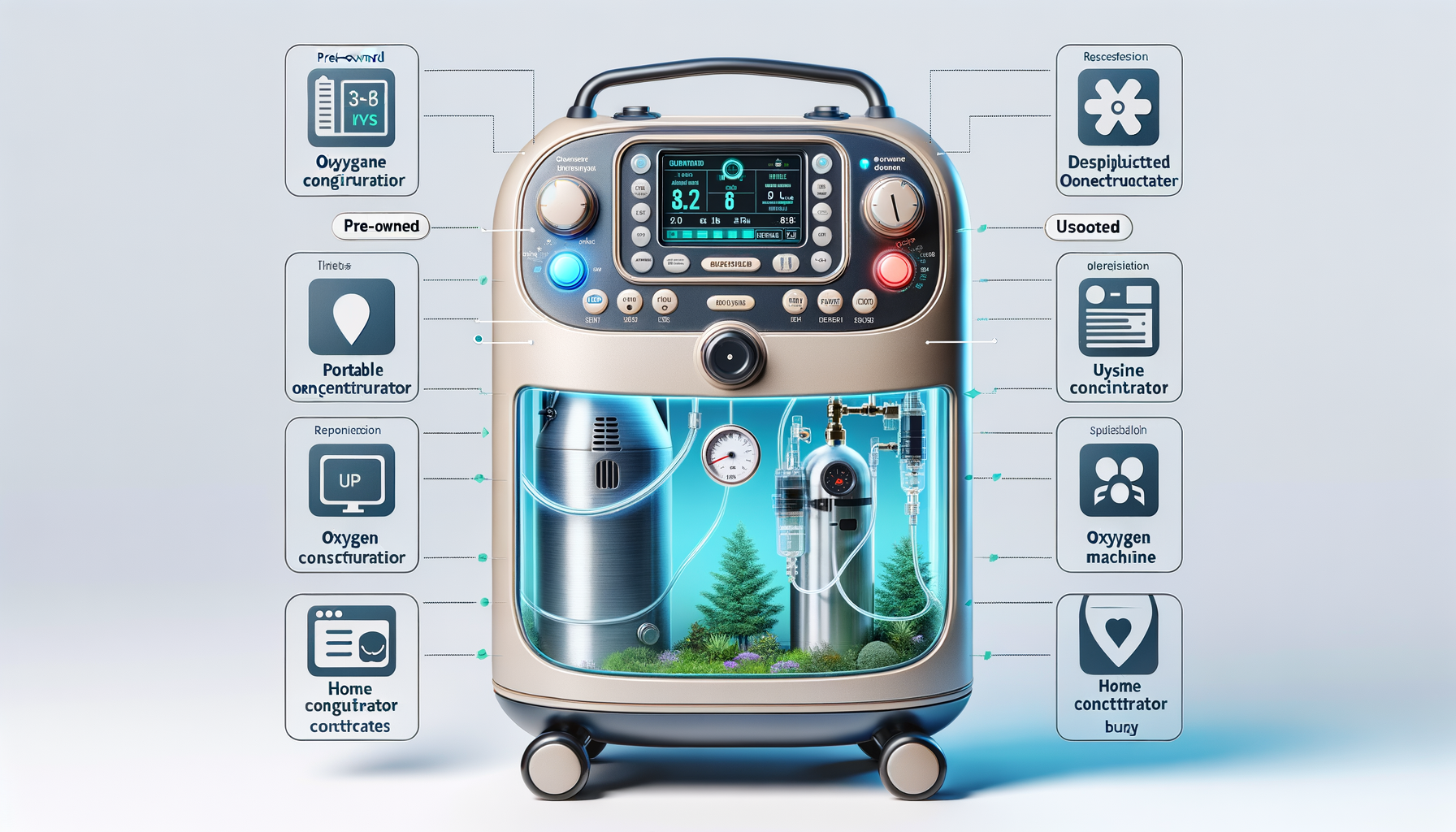Introduction to Used Portable Oxygen Concentrators
For individuals requiring supplemental oxygen, portable oxygen concentrators (POCs) offer a convenient and effective solution. However, purchasing a new unit can be costly, prompting many to consider pre-owned options. Choosing a used portable oxygen concentrator involves understanding its functionality, assessing its condition, and ensuring it meets your specific needs. This article delves into the essential factors to consider when selecting a used POC, what to check before buying, and the differences between portable and home oxygen concentrators.
How to Choose a Used Portable Oxygen Concentrator
When selecting a used portable oxygen concentrator, several factors should guide your decision. First, verify the device’s age and usage history. Older models may lack features found in newer versions, and excessive use can lead to wear and tear. Check the device’s maintenance records to ensure it has been properly serviced.
Consider the oxygen output and battery life. A POC should meet your prescribed oxygen levels and offer sufficient battery life for your lifestyle. Battery longevity is crucial, especially if you plan to use the device outside the home frequently. Evaluate the portability of the unit, including its weight and size, to ensure it fits your mobility needs.
Lastly, research the manufacturer’s reputation and customer reviews. A well-regarded brand often indicates reliability and quality. Ensure that the device comes with a warranty or return policy for added security.
What to Check Before Buying a Pre-Owned Oxygen Machine
Before purchasing a pre-owned oxygen machine, conduct a thorough inspection. Start by examining the physical condition of the device. Look for any visible damage, such as cracks or dents, which could affect its performance. Check the display screen and control buttons for functionality.
Test the oxygen concentrator to ensure it operates smoothly. Listen for any unusual noises, which might indicate mechanical issues. Verify the oxygen output using an oximeter to confirm it meets your prescribed levels.
Review the accessories included with the machine. Ensure that the charger, carrying case, and any additional components are in good condition. If possible, request a demonstration from the seller to see the machine in action.
Differences Between Portable and Home Oxygen Concentrators
Understanding the differences between portable and home oxygen concentrators is crucial in making an informed decision. Portable oxygen concentrators are designed for mobility, allowing users to maintain an active lifestyle. They are lightweight, battery-operated, and can be carried easily, making them suitable for travel and daily activities.
In contrast, home oxygen concentrators are larger, more powerful machines intended for stationary use. They provide a higher oxygen output and are typically plugged into a power outlet, making them ideal for continuous, long-term oxygen therapy at home.
Consider your lifestyle and oxygen needs when choosing between the two. If you require oxygen therapy primarily at home, a home concentrator may be more suitable. However, for those who need oxygen on the go, a portable concentrator offers the flexibility and convenience required to stay active.
Conclusion: Making an Informed Decision
Choosing a used portable oxygen concentrator involves careful consideration of various factors, from the device’s condition and functionality to your specific oxygen needs. By understanding what to look for in a pre-owned machine and the differences between portable and home models, you can make an informed decision that supports your health and lifestyle. Whether you prioritize mobility or require a robust home unit, selecting the right oxygen concentrator is a step towards improved well-being and independence.




Leave a Reply